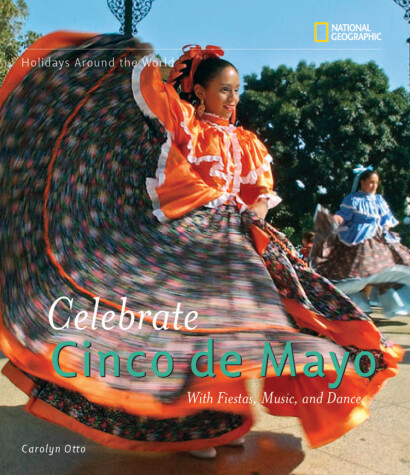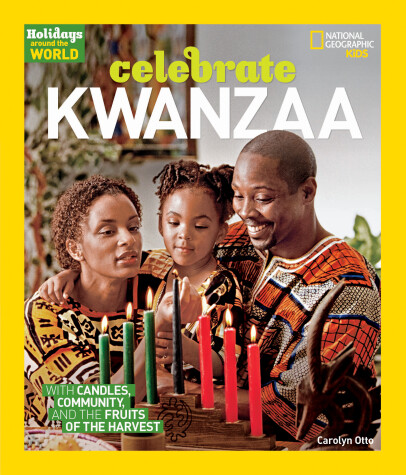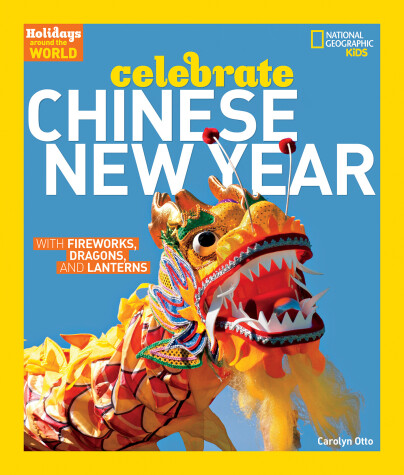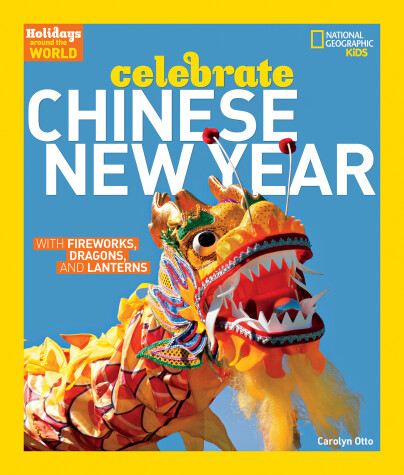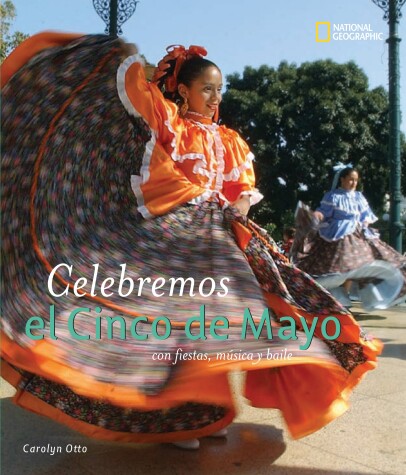Holidays Around The World
7 total works
Celebrate Cinco de Mayo continues National Geographic’s spectacular Holidays Around the World series with this joyous feast of Mexican culture—an annual event in Mexico and an increasingly popular holiday in America as well. Many mistakenly assume that the fifth of May is Mexico’s Independence Day. In fact, the date marks the anniversary of a famous 1862 battle in which the Mexicans defeated the French. Known as the Battle of Puebla, the victory marked a watershed in Mexican pride and unity that echoes down to the present day.
With succinct text and dazzling photography, Celebrate Cinco de Mayo takes readers on a journey to discover the rich variety of celebrations across our country—from Texas to Minnesota to New York. This inviting book gives readers a flavor of the wide range of colorful holiday traditions: parades and pageants; races and rodeos; mariachi music and dancing; parties with piñatas and delicious Mexican foods. Children will learn how the largest Cinco de Mayo event in the world, the Fiesta Broadway, actually takes place in the United States, and attracts more than 600,000 revelers each year.
Mexico is our closest neighbor and the birthplace of America’s largest immigrant community; a knowledge of Mexican culture and history is increasingly relevant to students across the United States.
National Geographic supports K-12 educators with ELA Common Core Resources.
Visit www.natgeoed.org/commoncore for more information.
With succinct text and dazzling photography, Celebrate Cinco de Mayo takes readers on a journey to discover the rich variety of celebrations across our country—from Texas to Minnesota to New York. This inviting book gives readers a flavor of the wide range of colorful holiday traditions: parades and pageants; races and rodeos; mariachi music and dancing; parties with piñatas and delicious Mexican foods. Children will learn how the largest Cinco de Mayo event in the world, the Fiesta Broadway, actually takes place in the United States, and attracts more than 600,000 revelers each year.
Mexico is our closest neighbor and the birthplace of America’s largest immigrant community; a knowledge of Mexican culture and history is increasingly relevant to students across the United States.
National Geographic supports K-12 educators with ELA Common Core Resources.
Visit www.natgeoed.org/commoncore for more information.
Celebrate Kwanzaa continues the spectacular Holidays Around the World series by focusing on this African-American holiday, which falls during the festive, gift-giving season and is celebrated by families, communities, and schools throughout America. With succinct, lively text and beautiful photographs, the book celebrates African-American culture and helps us to understand and appreciate this special holiday.
Over the course of seven days, African Americans, families and friends, come together to light the candles that symbolize their past and future—and their unity. They gather as a community to make music and to dance; to feast on harvest foods and the good things of the earth; and to exchange simple, often homemade, gifts. Readers are introduced to the symbols of the holiday, such as the mkeka (a special placemat), kinara (candleholder), and kikombe cha umoja (unity cup). Important concepts, like the seven principles, are explained. In addition, a note from the book's consultant, aimed at parents and teachers, puts the holiday in its full cultural and historical perspective.
National Geographic supports K-12 educators with ELA Common Core Resources.
Visit www.natgeoed.org/commoncore for more information.
Over the course of seven days, African Americans, families and friends, come together to light the candles that symbolize their past and future—and their unity. They gather as a community to make music and to dance; to feast on harvest foods and the good things of the earth; and to exchange simple, often homemade, gifts. Readers are introduced to the symbols of the holiday, such as the mkeka (a special placemat), kinara (candleholder), and kikombe cha umoja (unity cup). Important concepts, like the seven principles, are explained. In addition, a note from the book's consultant, aimed at parents and teachers, puts the holiday in its full cultural and historical perspective.
National Geographic supports K-12 educators with ELA Common Core Resources.
Visit www.natgeoed.org/commoncore for more information.
Celebrate Valentine’s Day focuses on historical and cultural aspects of this holiday and the international traditions, food, and celebrations associated with it. This celebration of love includes fun facts; a recipe; a map showing the location of all photographs; a resource list of books, videos, and Web sites; and a note from an expert consultant, aimed at parents and teachers, which deepens our understanding of the holiday’s importance and meaning.
The history of the holiday is shrouded in mystery, but we do know that Valentine’s Day wasn’t always a time for red roses, candy hearts, and frilly greeting cards. Readers learn that some historians trace the feast of the patron saint of love to ancient Greek and Roman festivals that signaled the beginning of spring, which officially began in February in ancient Rome. We discover how, according to one legend, St. Valentine was a priest imprisoned for defying the emperor. Before being put to death, he sent the first "valentine" —a letter that he signed "From your Valentine," words still used on cards today.
Readers discover a range of international Valentine’s Day traditions: making and exchanging cards decorated with hearts, lace, and ribbons; giving flowers, candy, balloons, and other gifts to friends and loved ones; attending special parties at school; and baking of cookies and other treats. We learn how the holiday’s popularity has grown around the world, particularly in Korea and Japan, where office workers give chocolates to their co-workers on Valentine’s Day.
National Geographic supports K-12 educators with ELA Common Core Resources.
Visit www.natgeoed.org/commoncore for more information.
The history of the holiday is shrouded in mystery, but we do know that Valentine’s Day wasn’t always a time for red roses, candy hearts, and frilly greeting cards. Readers learn that some historians trace the feast of the patron saint of love to ancient Greek and Roman festivals that signaled the beginning of spring, which officially began in February in ancient Rome. We discover how, according to one legend, St. Valentine was a priest imprisoned for defying the emperor. Before being put to death, he sent the first "valentine" —a letter that he signed "From your Valentine," words still used on cards today.
Readers discover a range of international Valentine’s Day traditions: making and exchanging cards decorated with hearts, lace, and ribbons; giving flowers, candy, balloons, and other gifts to friends and loved ones; attending special parties at school; and baking of cookies and other treats. We learn how the holiday’s popularity has grown around the world, particularly in Korea and Japan, where office workers give chocolates to their co-workers on Valentine’s Day.
National Geographic supports K-12 educators with ELA Common Core Resources.
Visit www.natgeoed.org/commoncore for more information.
Celebrate Valentine’s Day focuses on historical and cultural aspects of this holiday and the international traditions, food, and celebrations associated with it. This celebration of love includes fun facts; a recipe; a map showing the location of all photographs; a resource list of books, videos, and Web sites; and a note from an expert consultant, aimed at parents and teachers, which deepens our understanding of the holiday’s importance and meaning.
The history of the holiday is shrouded in mystery, but we do know that Valentine’s Day wasn’t always a time for red roses, candy hearts, and frilly greeting cards. Readers learn that some historians trace the feast of the patron saint of love to ancient Greek and Roman festivals that signaled the beginning of spring, which officially began in February in ancient Rome. We discover how, according to one legend, St. Valentine was a priest imprisoned for defying the emperor. Before being put to death, he sent the first "valentine" —a letter that he signed "From your Valentine," words still used on cards today.
Readers discover a range of international Valentine’s Day traditions: making and exchanging cards decorated with hearts, lace, and ribbons; giving flowers, candy, balloons, and other gifts to friends and loved ones; attending special parties at school; and baking of cookies and other treats. We learn how the holiday’s popularity has grown around the world, particularly in Korea and Japan, where office workers give chocolates to their co-workers on Valentine’s Day.
National Geographic supports K-12 educators with ELA Common Core Resources.
Visit www.natgeoed.org/commoncore for more information.
The history of the holiday is shrouded in mystery, but we do know that Valentine’s Day wasn’t always a time for red roses, candy hearts, and frilly greeting cards. Readers learn that some historians trace the feast of the patron saint of love to ancient Greek and Roman festivals that signaled the beginning of spring, which officially began in February in ancient Rome. We discover how, according to one legend, St. Valentine was a priest imprisoned for defying the emperor. Before being put to death, he sent the first "valentine" —a letter that he signed "From your Valentine," words still used on cards today.
Readers discover a range of international Valentine’s Day traditions: making and exchanging cards decorated with hearts, lace, and ribbons; giving flowers, candy, balloons, and other gifts to friends and loved ones; attending special parties at school; and baking of cookies and other treats. We learn how the holiday’s popularity has grown around the world, particularly in Korea and Japan, where office workers give chocolates to their co-workers on Valentine’s Day.
National Geographic supports K-12 educators with ELA Common Core Resources.
Visit www.natgeoed.org/commoncore for more information.
Children have never had so many reasons to learn how Chinese people everywhere ring in the new and ring out the old. As China takes its new place on the global stage, understanding Chinese culture and values becomes ever more essential to our next generation.
For two joyous weeks red is all around. The color represents luck and happiness. Children receive money wrapped in red paper, and friends and loved ones exchange poems written on red paper. The Chinese New Year is also an opportunity to remember ancestors, and to wish peace and happiness to friends and family. The holiday ends with the Festival of Lanterns, as many large communities stage the famous Dragon Dance. Fireworks, parades, lanterns, presents, and feasts: these are some of the joys experienced by all who observe Chinese New Year.
Celebrate Chinese New Year is the latest, timely addition to National Geographic’s popular Holidays Around the World series. With 25 colorful images and a simple, educational text, the book is a lively invitation to revel in this child-friendly, national and international holiday. Carolyn Otto brings the historical and cultural aspects of the Chinese New Year into focus, and young readers experience the full flavor of an event celebrated by over a billion people in China, and countless others worldwide.
National Geographic supports K-12 educators with ELA Common Core Resources.
Visit www.natgeoed.org/commoncore for more information.
For two joyous weeks red is all around. The color represents luck and happiness. Children receive money wrapped in red paper, and friends and loved ones exchange poems written on red paper. The Chinese New Year is also an opportunity to remember ancestors, and to wish peace and happiness to friends and family. The holiday ends with the Festival of Lanterns, as many large communities stage the famous Dragon Dance. Fireworks, parades, lanterns, presents, and feasts: these are some of the joys experienced by all who observe Chinese New Year.
Celebrate Chinese New Year is the latest, timely addition to National Geographic’s popular Holidays Around the World series. With 25 colorful images and a simple, educational text, the book is a lively invitation to revel in this child-friendly, national and international holiday. Carolyn Otto brings the historical and cultural aspects of the Chinese New Year into focus, and young readers experience the full flavor of an event celebrated by over a billion people in China, and countless others worldwide.
National Geographic supports K-12 educators with ELA Common Core Resources.
Visit www.natgeoed.org/commoncore for more information.
Children have never had so many reasons to learn how Chinese people everywhere ring in the new and ring out the old. As China takes its new place on the global stage, understanding Chinese culture and values becomes ever more essential to our next generation.
For two joyous weeks red is all around. The color represents luck and happiness. Children receive money wrapped in red paper, and friends and loved ones exchange poems written on red paper. The Chinese New Year is also an opportunity to remember ancestors, and to wish peace and happiness to friends and family. The holiday ends with the Festival of Lanterns, as many large communities stage the famous Dragon Dance. Fireworks, parades, lanterns, presents, and feasts: these are some of the joys experienced by all who observe Chinese New Year.
Celebrate Chinese New Year is the latest, timely addition to National Geographic’s popular Holidays Around the World series. With 25 colorful images and a simple, educational text, the book is a lively invitation to revel in this child-friendly, national and international holiday. Carolyn Otto brings the historical and cultural aspects of the Chinese New Year into focus, and young readers experience the full flavor of an event celebrated by over a billion people in China, and countless others worldwide.
National Geographic supports K-12 educators with ELA Common Core Resources.
Visit www.natgeoed.org/commoncore for more information.
For two joyous weeks red is all around. The color represents luck and happiness. Children receive money wrapped in red paper, and friends and loved ones exchange poems written on red paper. The Chinese New Year is also an opportunity to remember ancestors, and to wish peace and happiness to friends and family. The holiday ends with the Festival of Lanterns, as many large communities stage the famous Dragon Dance. Fireworks, parades, lanterns, presents, and feasts: these are some of the joys experienced by all who observe Chinese New Year.
Celebrate Chinese New Year is the latest, timely addition to National Geographic’s popular Holidays Around the World series. With 25 colorful images and a simple, educational text, the book is a lively invitation to revel in this child-friendly, national and international holiday. Carolyn Otto brings the historical and cultural aspects of the Chinese New Year into focus, and young readers experience the full flavor of an event celebrated by over a billion people in China, and countless others worldwide.
National Geographic supports K-12 educators with ELA Common Core Resources.
Visit www.natgeoed.org/commoncore for more information.
Este libro ilustrado con fotografías para niños explora la alegre celebración en México y en Estados Unidos del Cinco de Mayo que conmemora la victoria en la batalla de Puebla del ejército mexicano sobre unas fuerzas francesas en 1862.
This book illustrated with photographs for children explores the joyful celebration in Mexico and in the United States of Cinco de Mayo (May 5th), the holiday which commemorates the victory of the Mexican army over French forces in Puebla in 1862.
This book illustrated with photographs for children explores the joyful celebration in Mexico and in the United States of Cinco de Mayo (May 5th), the holiday which commemorates the victory of the Mexican army over French forces in Puebla in 1862.
